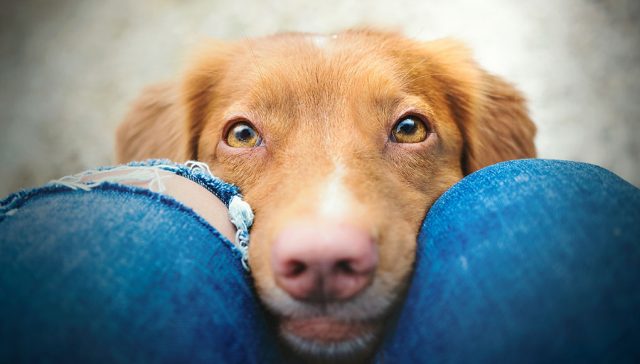
Table of Contents
Eye booger slash gunk is a combination of mucus buildup, oil, and other eye debris. It also comes in the name of dog eye discharge, eye crust, eye goop, etc.
Boogers are a common thing among dogs. However, excessive production of it is something veterinarians will consider abnormal.
Excessive eye gunks are a typical symptom of a possible dog complication. These complications include allergies, congenital disabilities, or even ulcers!
This article will look at the different types of your dog's eye discharge and the possible complications.
Read more to find out!
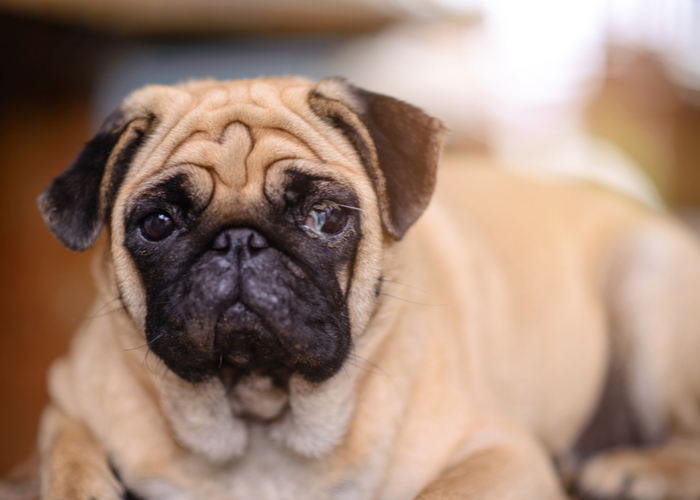
5 Types of Dog Eye Discharge “Eye Boogers”
According to Dr. Jennifer Coates of PetMD, there are at least five different types of eye boogers in dogs:
A Little Goop or Crust
Tears play a significant factor in your dog's eye lubrication, especially preserving their eye health.
When they sleep, their tears drain down through their eye ducts and produce goop or crust in them.
This goop is safe if it doesn't look like it's too excessive. It is also a sign that your dog's visual senses are doing just fine.
Watery Eyes
It's particularly typical for dogs to have watery eyes unless it's a sign of epiphora.
Epiphora or excessive watery eyes are associated with different eye conditions that might pose a problem to your dogs.
These conditions are:
- Conjunctivitis
- Distichiasis
- Dacryocystitis
- Excess lacrimation or tear production
- Inflamed eyelids
A potential cause of this condition might be the dog’s environmental factors and their allergic reaction to specific allergens.
Reddish-Brown tear stains
If you have light-colored dogs, you might notice the reddish-brown stains on their fur, especially around their eyes.
This stain happens because tears contain a pigment called porphyrin, which turns reddish-brown when exposed to air.
A reddish-brown tear stain is a common sign of excess tear discharge.
White-Gray mucus
White-grey mucus is a common symptom among dogs suffering from excessively dry eyes, called keratoconjunctivitis (KCR).
The underlying reason behind this condition is your dog's inability to produce tears; thus, their eyes secrete mucus instead.
Doctors may perform a test to see if the said condition is associated with other conditions like glaucoma, corneal ulcers, or dacryocystitis.
Yellow or Green Dog Eye Discharge
Yellow or green eye discharge is an indication that your dog is suffering from an eye infection.
It can also be caused by foreign matter or by allergies. However, sometimes, what looks like a typical eye infection may signify a more severe problem.
If you see this in your pup, chances are they have congenital disabilities, tear duct problems, or even tumors.
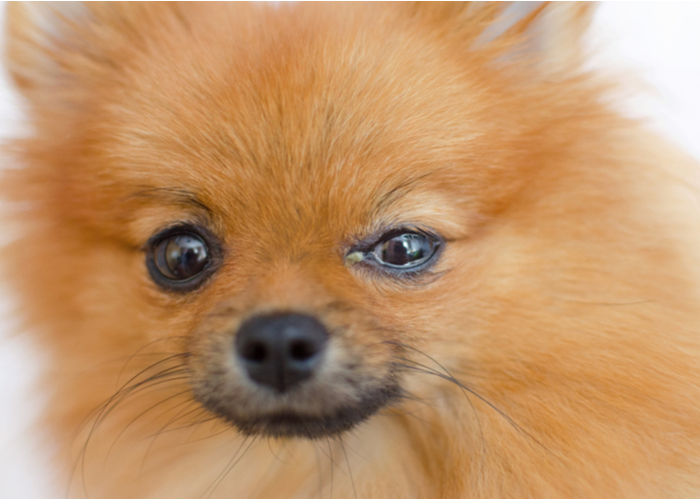
Possible Conditions Associated with Dog Eye Discharge
There are many reasons and conditions associated with eye discharges. Some are mild, some are severe, but nothing is impossible if you respond to them early.
Most of the time, it is due to the accumulated bacteria from the dog’s circumstances. It could have been from their environment, their allergies, or even during their mother’s pregnancy.
Here are ten possible conditions associated with dog eye discharge and what it could mean for them.
Conjunctivitis
Is your dog suffering from crusty, red, swollen eyes with a combination of mucus-like yellow-green discharge?
I know that sounds nasty, but your dog might be suffering from conjunctivitis, also known as pink eye.
Conjunctivitis is an infection usually caused by bacteria from the lining of the eye. Environmental irritants or allergens typically cause them.
Conjunctivitis is rooted in different reasons, which include:
- enlargement of the meibomian gland, your dog's oil glands
- eye trauma, caused by foreign material or objects coming in contact with their eyes
- allergies, congenital disabilities, tear duct problems, etc.
Furthermore, you can observe this condition through the following symptoms:
- cloudy, yellow-greenish discharge
- squinting or excessive blinking
- redness and swelling
- A state known as Cherry Eye
- the dog is pawing or rubbing the affected eye
Common treatments for this condition are:
-
- saline drops help lessen the irritation, swelling, and redness of your dog's eyes
- cold compress also helps in reducing the swelling of the eye
- artificial tears contain particular lubricants that specifically reduce eye inflammation
- natural remedies
Although non-contagious and infectious conjunctivitis does not harm other dogs, it does not go away without medication.
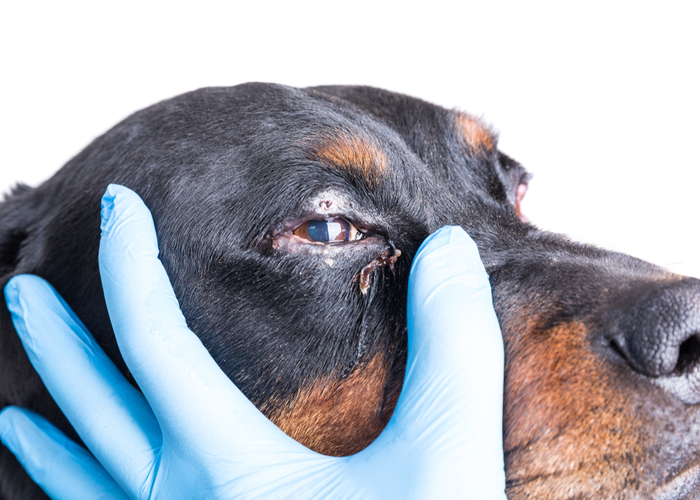
Distichiasis
Also known as ingrown eyelids, distichiasis or simply distichia is a mutation that is common to both humans and dogs.
In this condition, hair grows within the meibomian gland, irritating the eyeballs of your dog. Yikes!
Symptoms of distichiasis may include:
- constant rubbing of eyes with paws or any surface they can rub upon
- increased blinking and squinting of the eye
- visible redness in the white corners of their eyes
- ulcerations, or open sores within their eyelids
- epiphora, or excess tearing or watering by the eyes
Treatments of distichiasis may include:
- ocular lubricants (e.g., eye gel or ointments) remove the tear film and lessen the irritation felt within the eye
- manual plucking of extra eyelashes using epilation forceps to reduce the irritation if possible
- Cryotherapy procedure destroys the extra hair follicles on the dog’s eyes
Bear in mind that the severity of this condition depends on your little one's eyelash growth
irritation and eyelid conformation.
Overall, it is not a threatening condition, especially if it does not discomfort them. However, you
still have to keep an eye on your fur baby to prevent further complications.
Corneal Ulcers
Also known as keratitis, corneal ulcers are not directly associated with ulcers in the stomach but are characterized by extremely sore eyes.
This condition is usually from blunt trauma or laceration of anything sharp on your dog's eyes.
Symptoms of corneal ulcers are the following:
- ocular discharge, usually pus-like in appearance
- vision problems, especially if the problem is in the center of the corners
- excessive blinking to the point of holding their eye closed
- swollen and irritated eyes
- the sclera of the eye is red
Treatments for corneal ulcers may include:
- ophthalmic antibiotic (i.e., drops or ointment)
- frequent eye lubrication
- eye surgery, this procedure may be necessary to remove dead or weak layers of corneal tissue called grid keratectomy
Superficial corneal ulcers may heal by themselves in around 3 to 10 days. However, this may
depend if the time will come around without incident. Nonetheless, do seek treatment and bring your dog to a veterinarian.
Glaucoma
Glaucoma is generally a group of eye conditions that directly damages the optic nerve of your dog. This condition causes vision reduction depending on which eye it affects.
Glaucoma is somehow common in heredity within purebred dogs. Although it can be maintained and controlled, glaucoma cannot find a cure entirely.
Symptoms of glaucoma are usually:
- eyeball enlargement and lens displacement due to a prolonged increase of pressure
- dilated and slow-moving pupil
- cloudy corneas and avoidance of light.
If ever your dog is showing several signs of glaucoma, it is best to take them to the veterinarian
immediately. Keep in mind that over-the-counter remedies may not cure the condition if not prescribed.
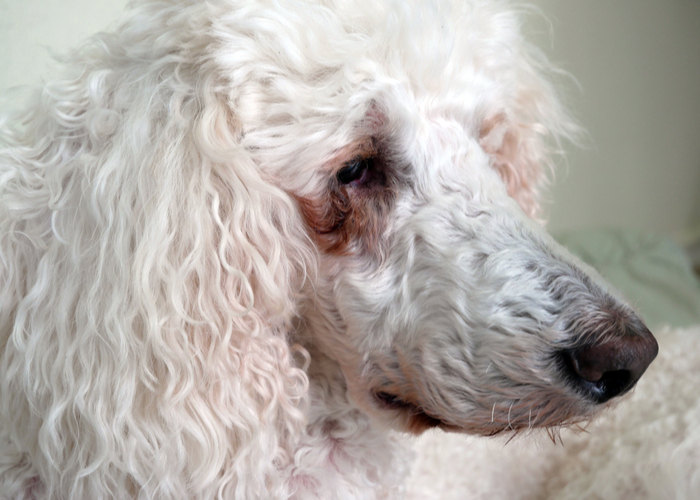
Epiphora
In dictionary terms, epiphora directly means excessive tearing or watering of your dog's eyes.
A cause of epiphora is the blockage of the nasolacrimal duct. This cause disrupts its ability to drain your dog's tears down, hence the apparent symptom of excess eye-watering.
It's a common condition amongst every dog breed, affecting a large percentage of seemingly healthy puppies.
In addition, it is difficult to identify if your dog has epiphora. You will have to directly observe your canine's eyes or take them to your local veterinarian to have them checked.
However, common symptoms of epiphora include:
- insufficient drainage of tear ducts, causing watery discharge by the eyes, or
- excessive tears, also produced by the tear ducts
- dampness or wetness below the eyes
This condition can even affect their coat's smell which will eventually infect their skin.
Reddish-brown stains appearing below their eyes is also an obvious sign of epiphora.
Treatments for epiphora may include:
- antihistamines if the cause of the condition is your pet's allergies
- antibiotics, if it roots from anything bacterial or infectious, depending on the origin
- if the nasolacrimal duct is blocked, they will either go through probing or intubation, wherein doctors insert a special tube into the said duct to flush out the toxic contents from it
If severe, your dog will have to undergo intensive eye treatments like eye surgery to prevent further damage to your puppy's eyesight.
Dry Eyes
Dry eyes, also known as keratoconjunctivitis sicca, are conditions wherein your dogs produce mucus-like discharge from the eyes. The cause of this condition could be the inability of the glands around the eye to secrete lubricants.
This lack of eye moisture weakens the eye's immunity to foreign debris, irritating it further.
Treatments for dry eyes include artificial tears. However, this will only provide lubrication for the eyes instead of completely curing them.
Furthermore, their veterinary prescription only controls your dog's dry eyes. This is because their dry eyes may vary in origin or may be eye-centric.
Removal of excess mucus and tear film is also a treatment. However, it is advised that a professional should do the procedure to prevent the risk of permanent blindness.
If a dry eye is detected and treated early, the canine has a good chance of maintaining its vision.
A standard test to determine the number of tears they secrete is called the Schirmer tear test.
Dog Eye Discharge Caused by Neonatal Ophthalmia
Neonatal ophthalmia or neonatal conjunctivitis is a condition wherein bacteria are passed down from the mother before birth. This condition is quite similar to regular conjunctivitis, except during the first few weeks of life.
The common symptoms of neonatal ophthalmia are:
- bulging and swollen eyes even before opening
- red and watery eyes when open and visible
- discharge of mucus or pus as the eyes start to open.
- eyelids glued or stuck together by the discharge
- crusty eyelids
Treatments for neonatal ophthalmia may include a doctor's prescription of antibiotic drops or ointment. You may use them to rub their eyes to dissolve bacteria accumulating from their eyes.
Artificial tears may also be needed for lubrication, especially for newborn puppies who cannot produce enough tears yet.
If adequately treated and monitored, your puppies will eventually recover as they grow.
Cataracts
Size ranges from as small as a dot to a whole lens; cataract is a condition that does not permit your dog’s retina to create a visual image.
Light may still pass through your dog's eyes. However, it will only come out with a cloudy appearance.
Genetics plays a significant role in how cataracts may likely be inherited, but this condition often occurs in older dogs than younger ones.
On the other hand, your dog's cataract might be comorbid to their primary condition, such as diabetes or eye inflammation.
Radiation and trauma, direct or blunt, also serve as contributing factors that would get them to develop cataracts over time.
Unfortunately for some, this condition can result in your dog’s permanent blindness if not treated immediately. Surgery is the only treatment suitable to contain and control the disorder.
Styes
An eye stye is a reddish swelling lump on the corner of your dog’s eyelids. It’s usually filled with pus that can clog and further infect their eyes.
An eye stye on your dog is a sign that there could be possible changes to their immune system, especially around their eye area.
In any form, do not squeeze out your dog's eye stye. This will only further infect or damage their eyes!
Treatments for styes include gently applying a warm compress to their affected area. Usage of a compress bag, warm cloth, or even a teabag may be sufficient.
Dacryocystitis
Dacryocystitis is also an eye infection wherein your dog’s lacrimal drainage system is inflamed.
A common cause of this condition is plant-based foreign material (e.g., pollen) clogging the drainage system.
Common symptoms of dacryocystitis are mild eye inflammation, excessively watery eyes, and pain in the innermost corner of the eye.
Treatments may include nasolacrimal flush, antibiotic therapy, and cannulation of the nasolacrimal duct.
Dacryocystitis is a condition that requires intensive care and cannot be cured with home remedies alone. During surgery, the doctors may require pulling your pup's eyelids to gain access to their duct.
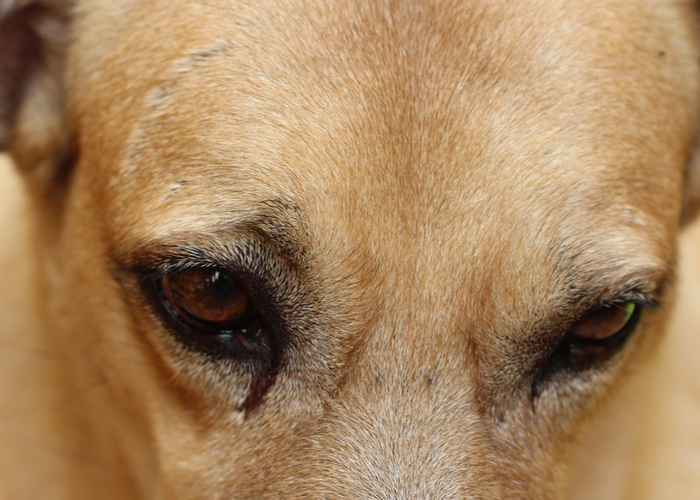
Conclusion On Dog Eye Discharge
More often than so, eye discharges may be a cause of a direct eye infection. It could also be an immune system reaction to foreign substances or conditions that could weaken your dog’s eye's defenses.
If you notice your dog suffering from any of the symptoms mentioned above, you should consult your veterinarian immediately.
Bear in mind not to draw any conclusions yet; they may be detrimental to their health and can be a sign of another illness.
You should treat your dog's eye conditions fully without obstacles to ensure faster healing if complied with and screened early.












